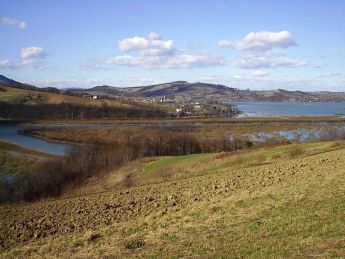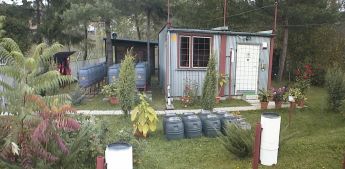Department of Geoenvironmental Research
FIELD STATIONS - HOMERKA
Research profile
The Laboratory is the only physico-geographical station that for 41 years (1971-2012) has been conducting stationary investigations into the fluvial processes in the Beskid’s catchments, which in the Carpathian part of the Vistula river basin are the chief sources of water and suspended sediment yield. The research studies concentrate essentially on the Homerka stream watershed.
With the parallel use of complementary, conventional, acoustic, magnetic and radioisotope methods, a stationary monitoring of hydrogeomorphological processes has been conducted since 1971. Its primary objective is to familiarize with the mechanisms underpinning transformation of precipitation into runoff, as well as with dynamics of sediment transfer in the systems of catchments characterized by different size and land use. A particular attention is paid to processes of erosion, sediment source and origin, mechanisms and dynamics of its yield to beds, transport and sedimentation. An important aspect of the studies is evaluation of geomorphological effectiveness of high energy precipitation and flooding and recognition of the range of threshold values of fluvial processes. In parallel, time-spatial studies on sediment transfer are carried out in the watersheds of different size in the fluvial system of Beskid’s part of the Dunajec river catchment, whose sedimentation basin is the Rożnów reservoir.Przy

On experimental slopes, the mechanisms and volume of erosion processes are investigated, with a particular focus on unsealed roads, vertical growth of arable terraces and source and dynamics of sediment yield to stream’s bed. In the typically engineered section of the Homerka stream bed that is made up of stone barrage protecting against bed load, and of ferroconcrete correction steps, located beneath, the studies are carried out to assess the impact of hydrotechnical facilities on transfer and volume of sediment transfer, with a particular focus on bed load and sedimentation taking place above the barrage protecting against rubbles.
Besides stationary studies, after each effective geomorphological flooding, in the flood beds of the Dunajec, Poprad and Kamienica Nawojowska rivers, investigations into changes in hydraulic cross sections are carried out, as well as examining with the use of a radio isotope 7Be the volume of sedimentation on flood plains and in the delta of Dunajec river in the Rożnów Reservoir. To identify factors behind acceleration of soil erosion or to trace sediment transfer through fluvial systems under the human impact in the period of the last 120 years, the radio isotope tracers such as 210Pb, 226Ra, 7Be i 137Cs have been employed.

The Laboratory is the only place in Poland where measurements of raindrop energy are carried out - necessary for studies on the volume of soil erosion as well as for acoustic and magnetic research on transport of gravel bed load, which form the basis for determination of balance of the transported load of sediment, and for identification of mechanisms behind changes in hydraulic cross sections of streams’ beds. The Laboratory has a unique, on a global scale and only one in Poland, 40-year series (1971-2011) of findings from stationary studies on erosion processes, transport of dissolved matter, suspended organic matter, bed load and sedimentation in the Beskid’s catchment.
Based on the Gauss’ law and corresponding to it the Laplace’s integral, it has been shown that, considering the aspect of long-term variability, it is sufficient for carrying out balance and determination of threshold values of fluvial processes. The results may be the basis for rational, sustainable spatial planning in the Beskid catchments, and also, in particular, these findings can be of much assistance in designing hydrotechnical facilities, bed engineering and systems of flood and anti-erosion protection.

